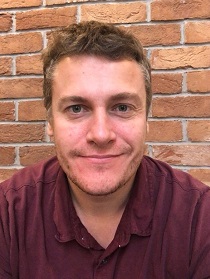Dr Peter Bray

-
Research Fellow in Material Science
Areas of interest
- Archaeological materials
- Chemical analysis
- Copper-alloy metallurgy
- Bronze Age archaeology
- Roman archaeology
- Archaeological theory
- Open science
- Open research
- Biography of objects.
Key Skills:
- Lead scientist microwave plasma-atomic emission spectrometry laboratory (MP-AES).
- New approaches to linking chemical, isotopic and metallographic data for metals with social and conceptual archaeology. Including case studies from the Chalcolithic to late Medieval in Europe and Asia.
- New methods for identifying and characterising technological and social decisions in scientific data, such as recycling and alloying choices.
- Innovative teaching and supervision with a commitment to pastoral care. Experience of a range of teaching methods and formats at all university stages.
- Novel applications of databases as a research tool, developing biography and prosopography of things, and identifying links between crafts.
Postgraduate supervision
I have extensive experience of teaching archaeological science, and supervising master's and doctoral research. I welcome enquiries about new student projects or chemical case studies on any archaeological materials.Research centres and groups
- Microwave Plasma-Atomic Emission Spectrometry (MP-AES) Research Group, lead scientist
- Chemical Analysis Facility (CAF)
- Visiting Researcher: Science Department, The British Museum.
Research projects
Metal has been used to name several of our major archaeological periods, such as the Bronze and Iron Ages. I am using chemistry to research the social role of bronze at those early points, and how it changed and developed through to the Middle Ages, over three thousand years later.
Within the main composition of bronze (tin mixed into copper) there are often other elements present at very low levels. My research focuses on analysing ancient bronze objects to identify those compositions, and then working out what that specific mixture means in terms of the ‘biography’ of the material. Rather than being fixed, the level of chemical 'impurities' in the metal (often arsenic, antimony and nickel) can change over the long history of a unit of metal. This happens when bronze from different sources was mixed, or when metal was remelted and recycled.
With colleagues at the British Museum and the University of Reading's chemical laboratories, we are developing several new projects. Sam Moorhead (BM) and I will look at the chemistry and political messages of late Roman British rebel coinage, to see how their breakaway Empire competed with their rivals. With Ross Thomas (BM), we plan to study Roman figurines that are encrusted with volcanic ash. Our work will confirm whether these were buried in the eruption of Vesuvius in AD 79, and explore the history of the metal objects, including their collection by Grand Tourists in the 18th century.
It is a privilege to hold this exciting Fellowship and to develop these new research links. This work is only possible thanks to the support of both the British Museum and University of Reading; and the investment by Reading in new laboratories, particularly a Microwave Plasma - Atomic Emission Spectrometer.